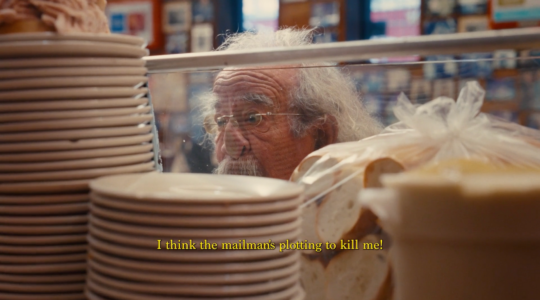When George Steel became the New York City Opera’s general manager and artistic director a year and a half ago, it was as if someone had given a particularly ardent fantasy baseball buff the keys to Yankee Stadium.
“I have a list of some 20 or 30 operas I’m dying to do,” he says, easing back in his office chair in the company’s offices below Lincoln Center. “I’m constantly daydreaming and imagining seasons, which artists to attach to each project. We’ve sketched out the seasons through 2017-‘18.”
But Steel is no mere fantasist, no tyro in the arts administration business. He is a highly skilled professional whose work at the 92nd Street Y and Columbia University’s Miller Theater were the calling cards that brought him to his current job. For our purposes, one need merely note that in those previous capacities, Steel had a particular affinity for Jewish musicians and artists, and he has brought that interest with him.
Consider these highlights of the NYCO’s upcoming season: the New York premiere of Leonard Bernstein’s opera “A Quiet Place”; trio of monodramas by John Zorn, Morton Feldman and Arnold Schoenberg, with the first a world premiere, the second an American premiere; and a first opera by Broadway composer Stephen Schwartz.
But Steel has added one new element to the NYCO mix. The renovated stage at the David H. Koch Theater now has a movable orchestra pit, which will allow for concerts as well as opera, and Steel is taking full advantage of the facility with a schedule that includes two evenings of Bernstein songs this fall and Zorn and Schwartz programs in the spring.
Steel has had long-standing relationships with Bernstein and Zorn. He was an aide to the former and at the Miller Theater provided a particularly friendly spotlight for the latter.
“Bernstein said that all his music was theater music,” Steel says. “His work embraced all genres, and he saw himself as part of a continuum. But there are some interesting threads that one can trace through all his work. For example, he used 12-tone music frequently, although it’s not a style he’s usually associated with. It’s there in ‘Wonderful Town’ and ‘Candide’ and ‘A Quiet Place.’ But he was also interested in burlesque music, not parody but music for strip joints, and you can hear that in the same pieces. He’s drawn to chorales, to rounds and canons. He embraces all those genres but is able to pursue each in his own way. It all sounds like Leonard Bernstein.”
From Steel’s outlook, the same may be said of Zorn, whose first opera, “La Machine de l’être,” is a wordless piece inspired by drawings by Antonin Artaud, the first part of the evening of monodramas.
“John has an unbelievable range,” he says. “He’s a great improviser and he’s created incredible pieces for others to improvise from. But he’s also a great classical composer. His concert music is astonishing. The opera is fiendishly difficult, a real showcase of vocal virtuosity. It has no text, but like many of John’s pieces it is a clear and compelling example of one great artist responding to another.”
Which one could justifiably say about George Steel’s opera-fantasies-come-true.
Oct. 27-Nov. 21: The New York premiere of Leonard Bernstein’s “A Quiet Place,” in a new production by the New York City Opera at the David H. Koch Theater at Lincoln Center; Nov. 6-7: “Lucky to Be Me: The Music of Leonard Bernstein,” a concert featuring a lineup of Broadway heavyweights including Christine Ebersole, Donna Murphy and Kelli O’Hara at the David H. Koch Theater at Lincoln Center, Nov. 6 at 8 p.m., Nov. 7 at 1:30 p.m. For more information, go to www.nycopera.com.
The New York Jewish Week brings you the stories behind the headlines, keeping you connected to Jewish life in New York. Help sustain the reporting you trust by donating today.




